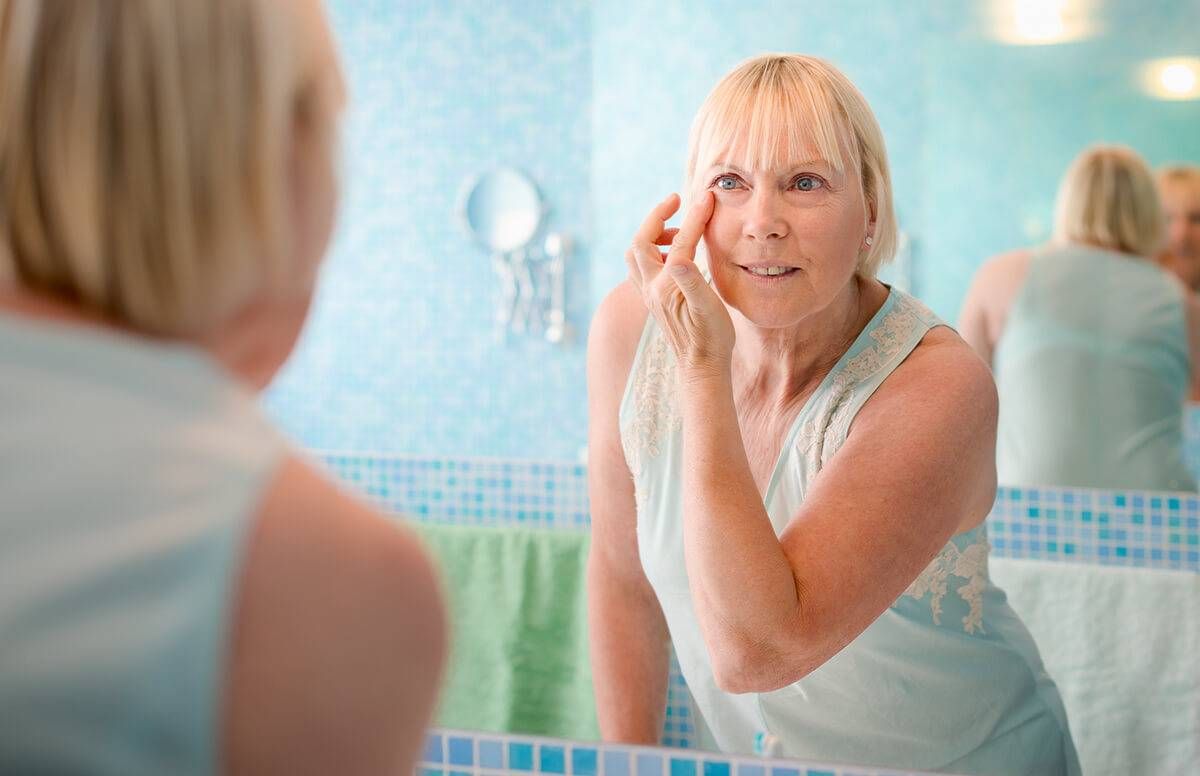The Fear of Looking Old: Let It Go
Science explains the mechanics of sags and wrinkles
I was visiting my 94-year-old father-in-law at his nursing home when another resident rolled her wheelchair up to our table and asked “You the wife?”

“Daughter-in-law,” I answered briskly, resisting the urge to scream a desperate, primal “NOOOOOOO!” My father-in-law was born in 1920. I came along in 1950. I hadn’t bothered with foundation or blow-drying that morning, but didn’t the money spent on hair dye, Y membership and cool glasses count for something?
Maybe, a friend suggested kindly, the woman thought I was the trophy wife.
Or maybe she takes delight in poking the exposed nerve that every American woman must feel as soon as we start receiving those postcards inviting us to join AARP: The fear that we look old.
Not young old, the folks who are biking on tandems across Australia or diving into mosh pits. Not luminous old, with sculpted bones, firm upper arms and white hair as bright as cumulus clouds, like the models in the ads for Viagra and Sonata. Just old old, a dull canvas of wrinkles, wattles, age spots and irrelevance.
Science Says We Will Show Our Age
Worse than feeling old is caring about it. After all, time moves in one direction for us all and our faces and necks are going to show the miles. Even if I had opted for brimmed hats and sunscreen over baby oil and aluminum reflectors during my adolescence, chances are I’d still look my age.
I first learned from Natalie Angier, a science writer with a dry sense of humor, why nothing short of surgery will help most of us: Our facial muscles are not attached to the skull in as many places as other muscles are to the skeleton.
“The facial muscles have been liberated from the constraints of bone, the better to allow us to speak and grimace and smile and feign surprise or interest,” she writes. “But the downside to that freedom of expression is that we cannot lift up the facial muscles through strength training; there is nowhere to lift them to. It’s a shame really. No matter how much discipline and tenacity we may muster, the aesthetic benefits of exercise stop at the jaw.”
Some women have always been desperate to maintain the facade of youth. At age 70, Elizabeth I preened about with bare breasts and courtiers who praised beauty that smallpox and age had effaced. Only in private letters did people mention the yellowed teeth and baldness.
Find Acceptance And Solidarity
I am counting on my women friends to help me through this. I treasure a snapshot of my grandmother and her friends, gathered in someone’s living room for coffee or cards. They were probably in their early 60s, grey–haired Midwestern ladies with tight perms, well-cushioned bodies and flowered dresses with generous bodices and softly shirred skirts. Their shoes, I am sure, were comfortable. There’s an admirable acceptance and solidarity in that photo. I don’t believe they thought they were letting themselves go. Neither were they letting their vanity terrorize them.
At my mother’s 75th birthday lunch, one of her friends mentioned how much she hated the turkey wattle on her neck. Her son, a doctor, had arranged a consultation with a plastic surgeon. Once the surgeon explained that fixing her neck required a full facelift, the woman declined. “I won’t match my friends,” she said.
She may be the rarity who goes against peer pressure. According to the American Society of Plastic Surgeons, there were 17.1 million cosmetic procedures done in 2016 which represented a 3 percent increase over the 2015 statistics. This included cosmetic surgical procedures, cosmetic minimally invasive procedures and reconstructive procedures.
The American Society of Plastic Surgeons statistics prove that this trend isn't limited to women; the top five cosmetic surgical procedures for men in 2016 included nose reshaping and eyelid surgery. These procedures were also in the top five for women, with breast augmentation still number one.
I’m haunted by an author’s side note in a profile years ago of Barbra Streisand’s plastic surgeon, who never saw a face that couldn’t use tweaking. The writer predicted that as such procedures become more common, women who don’t have work done will be seen as letting themselves go.
Let Yourself Go
I enjoyed a long weekend with three friends from high school. We spent the time laughing, remembering and talking about the pleasures and challenges of this time in our lives — health issues, grandchildren, aging parents, struggling children, faith, travel, creative work.
That is the work of adults, not the smooth-faced girls we were when we met. Pretending we are still 14 would mean overlooking all we have learned, endured and achieved over the past 50 years and all we have left to do.
In many religious traditions, spiritual growth requires letting go of the preoccupation with the entanglements of ego, greed and selfishness. In other words: letting yourself go. When I look at the lines and spots and sagging in the mirror, that’s what I’ll try to see.

